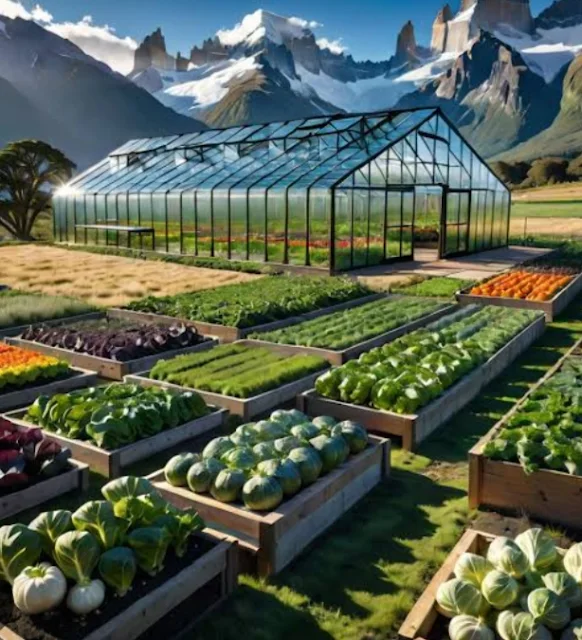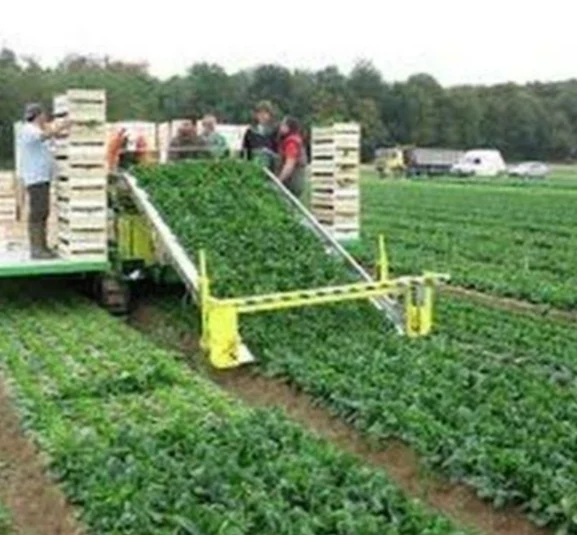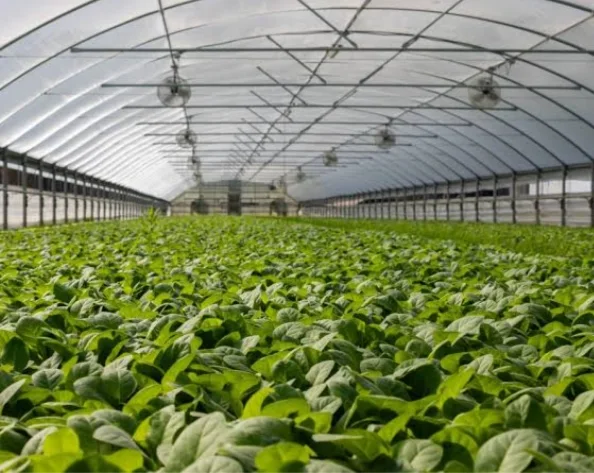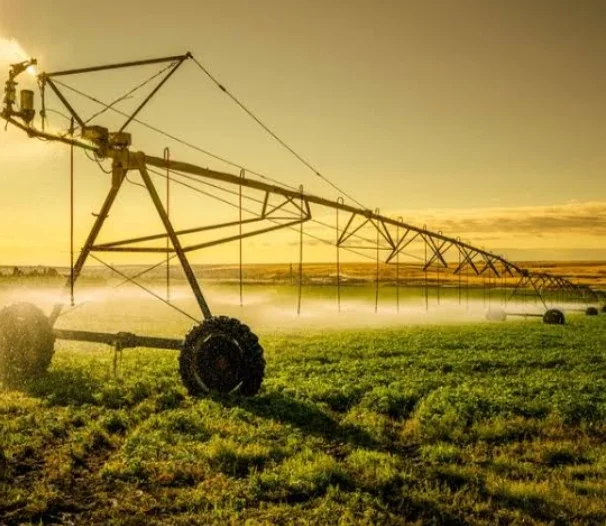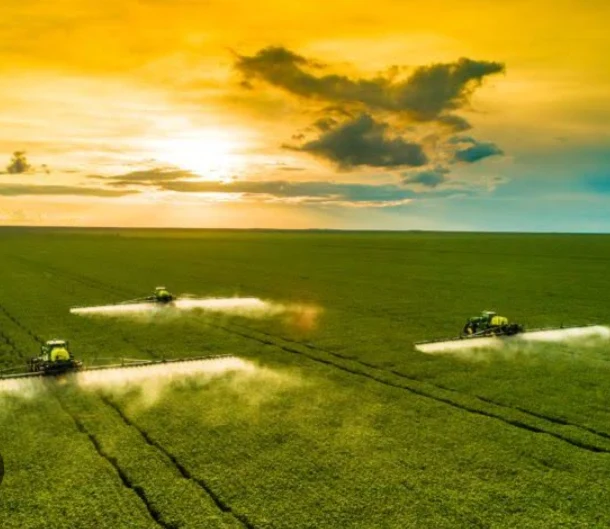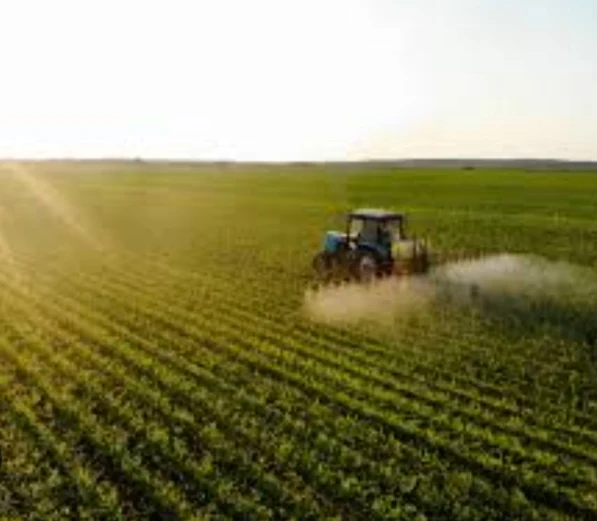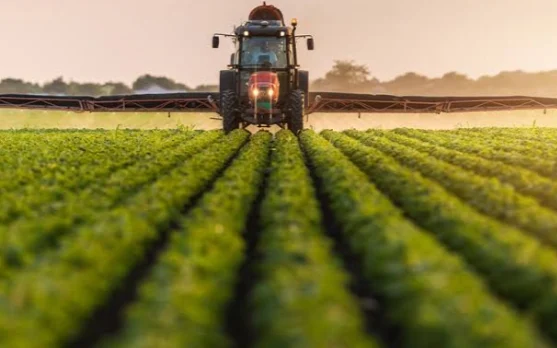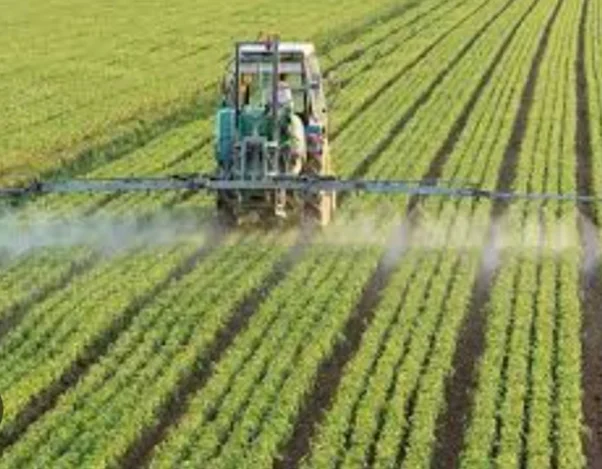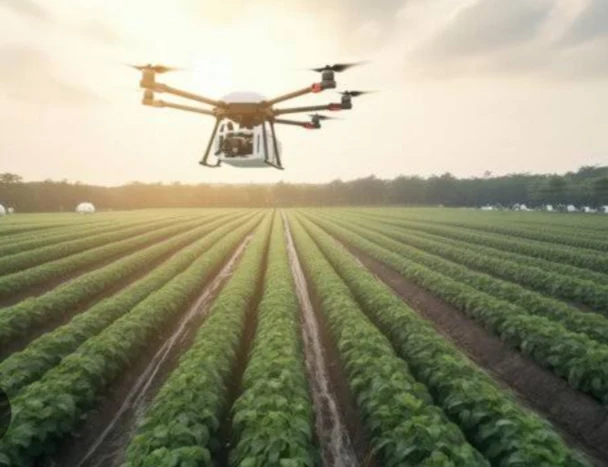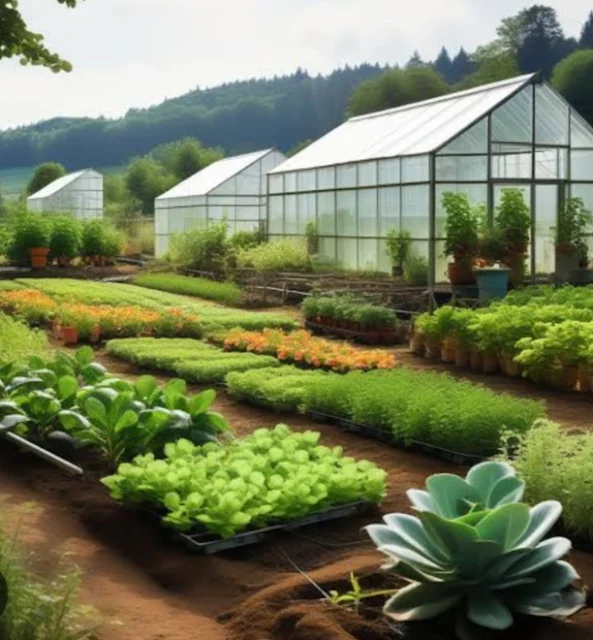Hystory of Modern Agriculture in India
Modern agriculture in India has been a story of transformation and challenges. Following independence, India faced a dire situation with recurring food shortages and the ever-present threat of famine.
In response, the government initiated a series of reforms aimed at boosting agricultural productivity and achieving self-sufficiency in food production.
These efforts encompassed technological innovations, policy changes, and infrastructural investments. The Green Revolution marked a critical turning point, introducing high-yielding crop varieties, expanding irrigation, and promoting the use of fertilizers and pesticides. This revolution dramatically increased yields but also raised concerns about sustainability and environmental impact. In recent decades, Indian agriculture has continued to evolve, focusing on diversification, promoting organic practices, and integrating advanced technologies to address challenges such as climate change and market volatility.
Here's the history of modern agriculture in India
The Green Revolution (1960s-1970s):
- Background: Facing food shortages and famines, India implemented the Green Revolution to increase agricultural productivity and achieve food self-sufficiency.
- Key Features: Introduced High Yielding Variety (HYV) seeds for staple crops, expanded irrigation systems, increased fertilizer and pesticide use, and focused on specific regions.
- Outcomes: Achieved food self-sufficiency, significantly increased crop productivity.
- Criticisms: Overreliance on chemicals, environmental concerns, and regional disparities in benefits.
Agriculture Diversification and Economic Liberalization (1980s-1990s):
- Economic reforms in 1991 led to a shift towards market-oriented production and diversification.
- Emphasis: Horticultural crops, livestock, dairy, aquaculture, and food processing industries.
The Biotechnology Era (2000s Onwards):
- Introduction of Genetically Modified (GM) crops, primarily Bt Cotton, with pest resistance traits.
- Benefits: Reduced pesticide use and increased cotton yields.
- Controversies: Concerns about long-term environmental and health impacts, control by multinational corporations, and impact on small farmers.
Current Challenges and Focus Areas:
- Climate Change: Adapting to unpredictable weather, drought, rising temperatures, and developing climate-resilient crops.
- Sustainability: Emphasis on organic farming, reducing chemical use, preserving soil health, and water conservation.
- Market Linkages: Strengthening infrastructure for storage, transportation, and value-addition to ensure fair prices for farmers.
- Technology Integration: Utilizing precision agriculture, remote sensing, and data analytics for improved farm management and decision-making.
While Indian agriculture has undergone significant progress, it continues to face challenges requiring a renewed focus on sustainability, inclusivity, and innovation.
Outlook Modern Agriculture in India
Here's an outlook on modern agriculture in India, encompassing challenges, opportunities, and key focus areas:
Challenges:
- Climate Change: Increasingly unpredictable weather patterns like droughts, floods, and heat waves pose a significant threat to crop yields and farmer livelihoods.
- Resource Depletion: Intensive farming practices have led to soil degradation, water scarcity, and declining biodiversity.
- Market Volatility: Farmers face fluctuations in prices and lack of direct access to markets, impacting their income stability.
- Fragmentation of Landholdings: Small and fragmented landholdings hinder efficient mechanization and adoption of large-scale sustainable practices.
Opportunities:
- Growing Demand: Rising population and urbanization drive the need for increased food production and value-added products.
- Shifting Consumer Preferences: Increased consumer awareness of health and sustainability is leading to a demand for organic and naturally grown produce.
- Technological Advancements: Precision agriculture, IoT (Internet of Things), drones, and data analytics offer the potential to optimize resource use, increase efficiency, and improve decision-making.
- Government Support: Initiatives for infrastructure development, market reforms, and promotion of sustainable practices provide support for the sector.
Focus Areas:
- Climate-Smart Agriculture: Developing and adopting crop varieties resilient to extreme weather, implementing efficient water management practices, and promoting climate-resilient farming techniques.
- Regenerative Agriculture: Prioritizing soil health, biodiversity, and integrated farming systems to address resource depletion and enhance long-term sustainability.
- Value Chain Development: Strengthening market linkages, investing in cold storage and processing facilities, and creating farmer-producer organizations to increase farmer income and reduce wastage.
- Precision Agriculture: Utilizing technology for data-driven decision-making, optimizing input use, and tailoring farm management to specific crop and local conditions.
The future of modern agriculture in India lies in balancing increased productivity with environmental sustainability and farmer well-being. While challenges are significant, the combination of technological innovation, policy support, and a shift towards sustainable practices holds the promise of a more resilient and equitable agricultural future for India.
Modern Agriculture in India: Statistic Data
Here's a breakdown of key statistical data regarding modern agriculture in India:
Production and Productivity:
- India is among the world's top producers of: rice, wheat, milk, fruits, vegetables, sugarcane, cotton, and various spices.
- Contribution to GDP: Agriculture and allied sectors contribute around 20% to the country's GDP.
- Land Use: Agriculture occupies about 60% of India's total land area.
- Crop Yields: Yields for major crops have increased significantly since the Green Revolution, but there's still room for improvement compared to global benchmarks.
Farmers and Employment:
- Employs a significant workforce: Over 50% of India's working population is engaged in agriculture and related activities.
- Smallholder Dominance: The vast majority of Indian farmers are small and marginal landholders, with average landholdings of less than 2 hectares.
Inputs and Resources:
- Irrigation: About 50% of agricultural land is irrigated. The expansion of irrigation has been critical for increased productivity.
- Fertilizer Use: Fertilizer consumption has increased significantly, but often with concerns about overuse and imbalances in nutrient application.
- Mechanization: Level of mechanization varies significantly between regions and crops, with room for greater adoption.
Sustainability and Challenges:
- Soil Degradation: A significant percentage of agricultural land suffers from degradation due to erosion, nutrient depletion, and salinization.
- Water Scarcity: Growing water scarcity poses a threat in many agricultural regions.
- Climate Change Impacts: Data shows an increase in occurrences of droughts, floods, and heat waves impacting agricultural production.
Economic Indicators:
- Agricultural Exports: India is a significant exporter of agricultural commodities, with rice, spices, meat, and cotton being major export products.
- Farmer Income: Farmer income remains a challenge with concerns about price volatility and inadequate market access.
Important Notes:
- Data on Indian agriculture can be found from various government sources like the Ministry of Agriculture and Farmers Welfare, as well as international organizations like the Food and Agricultural Organization (FAO).
- It is important to look for the most recent data for the most accurate picture of trends in the sector.
Modern Agriculture in India: Production Data
Here's a look at modern agriculture production data in India. I'll focus on major crops and recent trends:
Key Crops:
- Rice:
- India is the world's second-largest rice producer.
- Production in 2022-23: Estimated at 130.5 million metric tonnes (MMT).
- Wheat:
- Second-largest wheat producer globally.
- Production in 2022-23: Estimated at 112.2 MMT.
- Sugarcane:
- Second-largest producer of sugarcane.
- Production in 2022-23: Estimated at 430.5 MMT
- Pulses:
- Largest producer of pulses.
- Production in 2022-23: Estimated at 27.8 MMT.
- Cotton
- Second-largest producer and significant exporter of cotton.
- Production in 2022-23: Estimated at 34 million bales (1 bale = 170 kgs).
Other Significant Crops:
- Fruits and Vegetables: India is a major producer of a wide variety of fruits and vegetables.
- Milk: Largest milk producer in the world.
- Spices: India is known as the 'Land of Spices' and is a significant exporter.
Major Agricultural Production in India (2022-23 Estimates)
| Crop | Rank (Global) | Production (MMT) | Source |
|---|---|---|---|
| Rice | 2 | 130.5 | [invalid URL removed] |
| Wheat | 2 | 112.2 | [invalid URL removed] |
| Sugarcane | 2 | 430.5 | [invalid URL removed] |
| Pulses | 1 | 27.8 | [invalid URL removed] |
| Cotton | 2 | 34 (Million Bales) | [invalid URL removed] |
Notes:
- MMT = Million Metric Tonnes
- 1 Bale = 170kgs
Sources of Data:
- Ministry of Agriculture and Farmers Welfare: [invalid URL removed] (Provides crop-wise production estimates, state-wise breakdowns)
- Food and Agricultural Organization (FAO): http://www.fao.org/faostat/en/#home (Provides international statistics and comparisons)
Important Note: Production figures can fluctuate from year to year due to factors like weather patterns, pest and disease incidence, and market conditions. It's always best to look for the latest data for the most accurate picture.
Modern Agriculture in India: Policy and Regulation
Here's a breakdown of the key policies and regulations shaping modern agriculture in India:
Focus Areas of Policies and Regulations
-
Market Reforms and Price Support
- Minimum Support Price (MSP): A price guarantee provided by the government for major crops to ensure farmers receive a fair price.
- e-National Agriculture Market (e-NAM): An online trading platform connecting farmers and buyers across the country, increasing market transparency and efficiency.
- Reforms to the Essential Commodities Act: Aimed at reducing restrictions on storage and movement of agricultural produce, creating a more liberalized market.
-
Input Subsidies and Support
- Fertilizer Subsidies: To make fertilizers more affordable for farmers.
- Crop Insurance Schemes: To protect farmers against losses due to natural calamities.
- Subsidies for Irrigation and Agricultural Machinery: To encourage the adoption of modern practices.
-
Promoting Technology Adoption
- National Mission on Sustainable Agriculture: Promotes climate-resilient agriculture and focuses on soil health, water efficiency, and crop diversification.
- Schemes for Agricultural Mechanization and Technology: Encourage the use of advanced machinery and precision farming techniques.
- Digital Agriculture Mission: Promotes the use of data and technology (AI, drones, etc.) for informed decision-making.
-
Land Reforms and Farmer Empowerment
- Model Land Leasing Act: Aimed at simplifying land leasing regulations.
- Farmer Producer Organizations (FPOs): Support for the formation of FPOs to empower farmers and enhance their bargaining power.
- Contract Farming Initiatives: To promote linkages between farmers and agribusinesses for assured markets.
-
Sustainable Agriculture and Organic Farming
- Paramparagat Krishi Vikas Yojana (PKVY): Promotes traditional, organic farming practices.
- Mission Organic Value Chain Development for North Eastern Region (MOVCDNER): Supports organic farming development in India's northeastern states.
Key Regulatory Bodies
- Ministry of Agriculture & Farmers Welfare: The primary policy-making body for agriculture in India.
- Commission for Agricultural Costs and Prices (CACP): Recommends MSP's for major crops.
- Fertilizer Control Order (FCO): Regulates the quality and distribution of fertilizers.
- Protection of Plant Varieties and Farmers' Rights Authority (PPVFRA): Responsible for protecting intellectual property rights of farmers and plant breeders.
Important Notes
- Agriculture is a State Subject: Some regulations and policies are governed by individual states, creating some degree of variation across the country.
- Evolving Policies: The policy landscape is always evolving, with new initiatives and programs introduced periodically.
Modern Agriculture in India: Infrastructure data
Let's break down modern agriculture's infrastructure situation in India:
Key Areas
-
Irrigation: While India has the second-largest amount of arable land in the world, reliable irrigation remains a challenge. Key facts:
- Groundwater: Accounts for roughly 60% of irrigated area. This has led to over-extraction in many regions.
- Canals: Provide irrigation to some areas but suffer from inefficiencies, water loss, and distribution inequalities.
- Modernization: Drip irrigation, micro-sprinklers, and other precision irrigation techniques are gaining traction but adoption is still relatively low.
-
Storage and Warehousing: India faces significant post-harvest losses due to inadequate storage:
- Cold Storage: Vital for perishable produce, but capacity is far less than needed, leading to spoilage.
- Warehouses: Often lack modern standards, leading to infestation and degradation of grains and other crops.
-
Transportation and Logistics: Movement of agricultural products is hampered by:
- Road Networks: Poor connectivity in rural areas, especially during peak seasons, causes delays and wastage.
- Railways: While extensive, the system can be slow and lacks temperature-controlled facilities for perishables.
- Market Infrastructure: Agricultural markets can be fragmented and inefficient, hindering fair pricing and timely sales for farmers.
-
Technology Adoption: While increasing, widespread use of technology remains limited:
- Precision Farming: Smart sensors, GPS-guided machinery, data analytics are still largely confined to larger commercial farms.
- E-commerce Platforms: Connecting farmers to buyers is slowly growing, but faces adoption hurdles among smaller farmers.
Government Initiatives
There's significant government focus on enhancing agricultural infrastructure:
- Pradhan Mantri Krishi Sinchayee Yojana: Aims to expand irrigation coverage and promote efficient water use.
- Infrastructure Funds: Dedicated financing for building cold storages, warehouses, and rural infrastructure.
- E-NAM (National Agriculture Market): Digital platform intended to provide better market access and price discovery for farmers.
- Promotion of Farmer Producer Organizations (FPOs): Encouraging farmers to collectively invest in infrastructure and technology.
Challenges
- Land Fragmentation: Small farm sizes make investing in infrastructure individually difficult for many farmers.
- Financial Constraints: High costs of modern technologies remain a barrier, particularly for smaller-scale operations.
- Digital Literacy: Limited digital literacy and awareness among some farmers hinder technology adoption.
- Implementation Gaps: While policies exist, on-the-ground implementation and coordination can be patchy.
India's agricultural infrastructure is undergoing modernization, but progress is uneven. There's a need to prioritize:
- Accelerating precision irrigation expansion to counteract groundwater depletion.
- Building robust cold chain networks to minimize food waste.
- Upgrading roads and logistics systems for efficient farm-to-market flow.
- Enabling widespread access to modern technology through subsidies, training programs, and awareness campaigns.
Modern Agriculture in India: Private Sector Contribution
The private sector plays a crucial role in driving modern agriculture in India. Here's an overview of their key contributions:
1. Technology and Innovation
- Input Providers: Private companies are significant developers and suppliers of:
- High-yielding seeds and planting materials
- Advanced fertilizers and agrochemicals
- Modern irrigation systems
- Farm machinery and equipment
- Precision Farming Technologies: Companies offering drones, sensor-based solutions, farm management software, improving efficiency and yield optimization.
- Biotechnology Research: Private involvement in the development of genetically modified crops and other cutting-edge biotechnologies.
2. Supply Chain and Market Linkages
- Agri-Processors and Food Companies: Procuring produce directly from farmers, providing market access, and investing in processing infrastructure.
- Wholesale and Retail: Modern retail chains and e-commerce platforms expanding market reach for farmers, particularly for perishable and high-value produce.
- Contract Farming: Private companies engaging in contract farming agreements with farmers, ensuring assured markets and price stability.
- Logistics and Cold Chain: Development of efficient cold storage and transportation systems to minimize post-harvest losses.
3. Agricultural Extension and Training
- Knowledge Transfer: Private companies providing farmers with training, advisory services on modern practices, and crop management.
- Demonstration Farms: Establishing model farms to showcase innovative technologies and best practices.
- Farmer Producer Organizations (FPOs): Some private companies promote and support FPOs, improving farmers' collective bargaining power.
4. Investment and Financing
- Agribusiness Ventures: Attracting private investment into agricultural infrastructure, input supply chains, and value-added processing.
- Agri-Tech Startups: A thriving ecosystem of agri-tech startups providing innovative technology-driven solutions to various aspects of agriculture.
- Microfinance Institutions: Providing credit and financial services to farmers, particularly smallholders.
Collaborations and Partnerships
The private sector often partners with the government and research institutions to promote research and development, agricultural extension programs, and capacity-building initiatives for farmers.
Challenges and Considerations
- Smallholder Focus: The need for private sector interventions to cater to the needs of India's vast population of smallholder farmers.
- Fair and Equitable Partnerships: Ensuring mutually beneficial partnerships between farmers and private companies, addressing concerns over potential exploitation.
- Responsible Sourcing and Sustainability: Emphasis on environmentally sustainable and socially responsible practices within the private sector.
Modern Agriculture in India: Financial Support
Financial support is critical for the modernization and growth of agriculture in India. Here's a breakdown of the primary sources of financial support available to Indian farmers:
Government Initiatives
- Priority Sector Lending (PSL): Banks are mandated to allocate a certain percentage of their lending towards agriculture, ensuring the flow of credit to the sector.
- Kisan Credit Card (KCC): Provides farmers with short-term credit for crop cultivation, purchase of inputs, and other agricultural expenses.
- Subsidies: The government provides substantial subsidies on inputs like fertilizers, irrigation equipment, and farm machinery to reduce the cost of production for farmers.
- Crop Insurance Schemes: Such as the Pradhan Mantri Fasal Bima Yojana (PMFBY), these protect farmers against financial losses due to natural disasters.
- Investment Schemes: Programs like the Agriculture Infrastructure Fund (AIF) provide funding for post-harvest management infrastructure and community farming assets.
Institutional Lenders
- Commercial Banks: Offer a range of agricultural loans for purposes including land purchases, farm mechanization, and working capital.
- Regional Rural Banks (RRBs): Focus specifically on providing credit to rural areas and farmers.
- Cooperative Banks: Play a crucial role in financing agriculture, particularly for small and marginal farmers.
- Microfinance Institutions (MFIs): Extend microcredit to farmers for various agricultural needs, often focusing on women farmers and underserved communities.
Non-Banking Financial Companies (NBFCs)
- Agri-focused NBFCs: Specialize in providing agricultural finance, offering customized loan products and flexible repayment options.
Private Sector Initiatives
- Agri-input Companies: Sometimes extend credit to farmers purchasing their seeds, fertilizers, and other inputs.
- Agribusiness Companies: May provide pre-harvest financing to farmers linked through contract farming or procurement agreements.
- Agri-tech startups: Some fintech platforms offer innovative financial products and credit scoring mechanisms for farmers.
Challenges and Considerations
- Access for Smallholders: Ensuring access to credit is still a challenge for small and marginal farmers who often lack collateral or formal credit histories.
- Lack of Financial Literacy: Addressing low financial literacy among farmers is essential to make the most of available financial support schemes.
- Indebtedness: Farmer indebtedness is a persistent issue, requiring a focus on sustainable financing models and financial management training.
Future Directions
Emphasis is increasingly on digital financial solutions, innovative credit scoring models using alternative data sources, and promoting financial inclusion for all farmers.
Modern Agriculture in India: Company Involved
Here's a breakdown of some prominent companies involved in various aspects of modern agriculture in India. Note that this is not an exhaustive list, as the sector is vast.
Types of Companies & Examples
-
Agri-Input Providers
- Seed Companies:
- UPL (Advanta)
- Bayer CropScience
- Rasi Seeds
- Nuziveedu Seeds
- Fertilizer and Agrochemical Companies:
- Coromandel International
- UPL
- PI Industries
- Rallis India
- Chambal Fertilizers
- Irrigation and Farm Machinery:
- Jain Irrigation Systems
- Mahindra & Mahindra (Tractors)
- TAFE (Tractors)
- Shaktiman Farm Machinery
- Seed Companies:
-
Agricultural Technology and Innovation
- Precision Farming and Agritech Startups:
- CropIn
- AgNext
- SatSure
- Fasal
- Biotechnology Companies:
- Mahyco
- Metahelix Life Sciences
- Precision Farming and Agritech Startups:
-
Agri-Processing and Food Companies
- Multinational Companies
- ITC
- PepsiCo India
- Nestlé India
- Cargill India
- Indian Companies
- Adani Wilmar
- Amul
- Haldiram's
- Patanjali Foods
- Multinational Companies
-
Market Linkages and Supply Chain
- E-commerce Platforms:
- Ninjacart
- BigBasket
- WayCool
- Modern Retail Chains:
- Reliance Fresh
- Big Bazaar
- Agri-Logistics Providers:
- ColdStar Logistics
- E-commerce Platforms:
-
Finance and Insurance
- Private Banks:
- HDFC Bank
- ICICI Bank
- Agri-focused NBFCs
- Samunnati Financial
- Microfinance Institutions
- Crop Insurance Providers:
- Agriculture Insurance Company of India
- SBI General Insurance
- HDFC Ergo
- Private Banks:
Important Considerations
- Diverse Landscape: This list offers a glimpse of the range of companies involved. Many smaller, regional players and innovative startups are actively shaping modern agriculture in India.
- Partnerships and Collaborations: These companies often collaborate with government initiatives, research institutions, and farmer organizations.
Modern Agriculture in India: Technology Adoption
Here's a breakdown of key areas of technology adoption within India's modern agricultural sector, along with challenges and opportunities:
Areas of Technology Adoption
- Precision Farming:
- Sensor-based technologies for soil and crop monitoring, optimizing resource use.
- GPS-guided machinery for accurate input application and field operations.
- Variable-rate technology to tailor inputs based on specific field conditions.
- Drones and Remote Sensing:
- Crop scouting and assessment, identifying pest/disease infestations early.
- Mapping fields for irrigation planning and yield assessments.
- Spraying of inputs with greater precision.
- Data Analytics and Farm Management Software:
- Collecting and analyzing farm data for informed decision-making.
- Managing crop schedules, input usage, and financial records.
- Accessing weather forecasts and market information.
- Irrigation Technologies:
- Drip irrigation and micro-sprinklers for water efficiency.
- Automated irrigation systems with moisture sensors.
- Protected Cultivation:
- Greenhouses and polyhouses for climate-controlled production of high-value crops.
- Biotechnology:
- Adoption of genetically modified (GM) crops like Bt cotton (though adoption of GM food crops remains controversial).
- Research on drought-tolerant, pest-resistant, and nutrient-efficient crop varieties.
- Post-harvest Technologies:
- Improved storage facilities and cold chains to minimize losses.
- Value-added processing techniques to increase shelf-life and market opportunities.
Challenges to Technology Adoption:
- Cost: Many advanced technologies remain expensive for smallholder farmers.
- Infrastructure: Lack of reliable electricity and internet connectivity in rural areas.
- Digital Literacy: Low digital literacy and lack of technical skills among farmers.
- Fragmentation of Landholdings: Small landholdings hinder the cost-effective use of certain technologies.
- Awareness and Trust: Limited awareness about the benefits of new technologies and potential mistrust.
Opportunities and Initiatives
- Government Schemes and Subsidies: Helping reduce the cost of technology adoption.
- Agri-tech Startups: Developing affordable and user-friendly solutions tailored to Indian farmers.
- Farmer Training and Extension Services: Upskilling farmers on technologies.
- Digital Agriculture Mission: Promotes the use of emerging technologies (AI, blockchain, etc.).
- Public-Private Partnerships: Collaboration to foster innovation and knowledge transfer.
Modern Agriculture in India: Artificial Intelegent Implementation
Let's dive into the implementation of Artificial Intelligence (AI) within India's agricultural sector:
Key Areas of AI Application
-
Crop and Soil Monitoring:
- Drone & Satellite Imagery: AI analyzes aerial images to assess crop health, identify pest/disease outbreaks, and optimize fertilizer/pesticide use.
- Soil Sensors: AI-powered sensors measure soil moisture, nutrient levels, and pH, enabling data-driven irrigation and fertilization decisions.
-
Precision Farming:
- Variable Rate Applications: AI algorithms tailor seed, fertilizer, and pesticide quantities to specific field conditions, saving input costs and reducing environmental impact.
- Robotics: AI-guided robots are being deployed for weeding, harvesting delicate crops, and autonomous field operations.
-
Yield Prediction and Market Forecasting:
- Weather Patterns: AI analyzes historical weather data and real-time conditions to predict crop yields, helping farmers plan harvests and sales.
- Market Demand: AI models study market trends, consumer preferences, and supply-demand dynamics to aid farmers in making informed crop choices and sales strategies.
-
Livestock Management:
- Animal Health Monitoring: Wearable sensors and AI algorithms track livestock health indicators to detect illnesses early and optimize breeding.
- Feed Optimization: AI-powered systems tailor feed mixes for individual animals to maximize productivity and health.
-
Supply Chain Optimization:
- Quality Assessment: Computer vision and AI grade produce quality, reducing waste and ensuring consistency for buyers.
- Logistics: AI-powered route and shipment planning optimize the flow of agricultural produce, minimizing spoilage and ensuring timely deliveries.
Examples of Projects
- Microsoft's FarmBeats: AI platform providing data-driven insights for farmers with limited connectivity.
- IIT Kharagpur's AI for Precision Agriculture: Research on developing AI-based tools for crop disease detection and management.
- CropIn: AI-driven farm management and analytics platform used by farmers and agribusinesses across India.
Challenges to AI Adoption
- Cost: High-tech AI solutions can be expensive, particularly for small-scale farmers.
- Data Availability: Reliable and extensive agricultural datasets are needed to train effective AI models.
- Digital Skills Gap: Many farmers lack digital literacy needed to utilize AI solutions effectively.
- Trust: Farmers may be hesitant towards new technologies, requiring demonstration and training.
Government Support
The Indian government recognizes AI's potential in agriculture:
- National e-Governance Plan in Agriculture (NeGP-A): Promotes the use of AI, IoT, and data analytics in the sector.
- ICAR (Indian Council of Agricultural Research): Researching and developing AI-based agricultural solutions.
The Future of AI in Indian Agriculture
AI holds enormous promise for transforming Indian agriculture. We can expect:
- Increased productivity and resource efficiency through data-driven decision-making.
- Reduced food loss and waste throughout the supply chain.
- Improved resilience to climate change via AI-powered weather forecasting and adaptation strategies.
- Empowerment of farmers with real-time information and better market access.
Conclusion of Modern Agriculture in India
Modern agriculture in India stands at a crossroads. While traditional methods persist, the sector is steadily embracing technological advancements, infrastructure improvements, and a shift towards sustainability.
The push for increased irrigation efficiency, precision farming practices, and the emerging role of artificial intelligence signal a desire to maximize yields and optimize resource use. This transformation is crucial considering India's vast population and the need for food security.
However, challenges loom large. Fragmented landholdings, inadequate storage facilities, and logistical bottlenecks continue to hinder agricultural progress. Addressing these issues is vital to minimize post-harvest losses and improve farmer incomes. The effective implementation of government policies, alongside investments in rural infrastructure, will create an enabling environment for modern agriculture to flourish.
The integration of technology holds immense potential for India's agricultural future. Artificial intelligence, precision farming tools, and digital market platforms can empower farmers with data-driven insights and enhance connectivity. Overcoming barriers such as cost, accessibility, and digital literacy will be critical to ensure all farmers can benefit from these advancements.
Ultimately, the success of modern agriculture in India hinges on a collaborative approach. Government support, private investment, farmer participation, and a focus on sustainability are essential components. By balancing tradition with innovation and addressing infrastructural shortcomings, India can chart a path towards a more productive, resilient, and equitable agricultural system.

